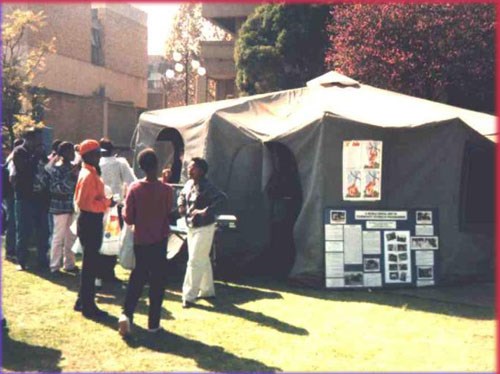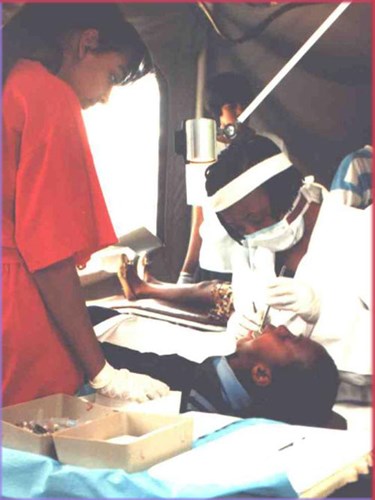South Africa - An Atraumatic Restorative Treatment (ART) in a Mobile Dental Clinic, Johannesburg
South Africa - An Atraumatic Restorative Treatment (ART) in a Mobile Dental Clinic, Johannesburg

Introduction
The Division of Public Oral Health, Faculty of Dentistry of the University of the Witwatersrand provides a Mobile Dental Service (MDS) programme to low income communities around Johannesburg since 1985. This is a presentation on the introduction and impact of Atraumatic Restorative Treatment (ART) as part of the services available in the MDS, based on the study by Mickenautsch S, Rudolph MJ, Ogunbodede EO and Frencken JE 1999.

Background and Rationale
The Mobile Dental System is a 2 x 2.5 meter box trailer that can be towed by a four wheel drive vehicle, having an enclosed area of 8 x 9 meters that is formed by deploying a cover system housed on top of the trailer. When ready, the unit has four fully equipped dental clinics, a combined waiting and educational area. Once deployed the MDS remains in a community for several weeks and is then moved to another (Rudolph MJ et al 1992). These communities are chosen at the beginning of the year and receive oral care including tooth extractions and restorations and are open to all members. School children in the community receive oral health education and screening and referrals to the MDS for treatment.
ART was introduced in South Africa in 1996 and further included into the MDS - ART restorations provide preventive and curative care using only hand instruments not requiring electricity and are child friendly as there is no drilling involved and results in a sealed restoration.

Project Outline
All oral care given through the MDS 1) before ART was introduced (1995-96) and 2) after ART had been fully included (1997-98) were collected and computed. The staff were free to choose the restorative and other treatment methods that they thought was fit.
Achievements
- After introduction of ART restorations in the Mobile Dental System programme, the overall mean restorative/extraction ratio (REX) increased from 0.37 to 1.15. This was due to a significant decrease in tooth extractions and a significant increase in the restorations in both primary and permanent dentitions.
The proportion of ART restorations were 98.2% compared to the total number of restorations. This is partly due to the change in choice of treatment by dental operators, in favour of ART. - The one year survival of ART restorations were 93.6%.
- Full and partial (more than 90%) retention of the sealant extension to ART restoration was obtained in 75% of the cases after an year.
- Furthermore, infection control was made simpler, facilitating easier maintenance of the Mobile Dental System equipment.
Conclusion
The introduction of ART restorations to the mobile dental programme reduced extractions, increased tooth restorations and made oral care more preventive.
References
- Mickenautsch S, Rudolph MJ, Ogunbodede EO, Frencken JE. The impact of the ART approach on the treatment profile in a mobile dental system (MDS) in South Africa. Int Dent J. 1999;49:132-138. Abstract PubMed
- Rudolph MJ, Chikte UM, Lewis HA. A mobile dental system in Southern Africa. J Public Health Dent. 1992;52:59-63. Abstract PubMed
